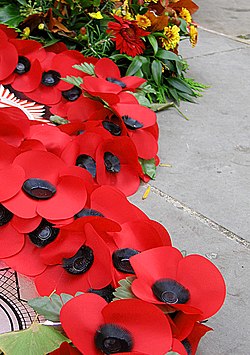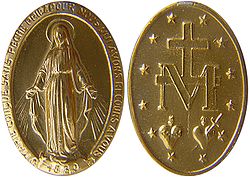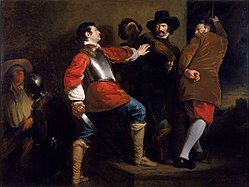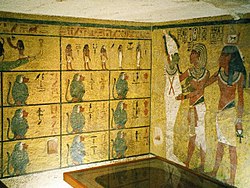November
| << | November | >> | ||||
| Su | Mo | Tu | We | Th | Fr | Sa |
| 1 | ||||||
| 2 | 3 | 4 | 5 | 6 | 7 | 8 |
| 9 | 10 | 11 | 12 | 13 | 14 | 15 |
| 16 | 17 | 18 | 19 | 20 | 21 | 22 |
| 23 | 24 | 25 | 26 | 27 | 28 | 29 |
| 30 | ||||||
November (Nov.) is the eleventh month of the year in the Gregorian calendar, coming between October and December. It has 30 days. Its name is from the Latin word novem, which means "nine". It was the ninth month of the year before January and February were added to the Roman Calendar.
November always begins on the same day of the week as March, and additionally, February in common years. November always ends on the same day of the week as August.
The Month
November is the eleventh month of the year in the Gregorian calendar, after October and before December, which is the last month. November has 30 days. It was the ninth month in the old Roman calendar, which is where its name comes from. It kept its name when January and February were added to the beginning of the year, despite becoming the eleventh month. The ninth month is now September.
November begins on the same day of the week as February in common years and March every year, as each other's first days are exactly 39 weeks (273 days) and 35 weeks (245 days) apart respectively. November ends on the same day of the week as August every year, as each other's last days are exactly 13 weeks (91 days) apart.
In common years, November starts on the same day of the week as June of the previous year, and in leap years, September and December of the previous year. In common years, November finishes on the same day of the week as March and June of the previous year, and in leap years, September of the previous year.
In years immediately before common years, November starts on the same day of the week as August of the following year, and in years immediately before leap years, May of the following year. In years immediately before common years, November finishes on the same day of the week as May of the following year, and in years immediately before leap years, February and October of the following year.
In the Northern Hemisphere, November is an Autumn (Fall) month, and the further north in the hemisphere, the more likely it is to get colder as December approaches. In the Southern Hemisphere it is a Spring month. In each hemisphere, it is the seasonal equivalent of May in the other.
Several observances around the beginning of the month are believed to be related, linked to the old Celtic celebration of Samhain on November 1. These events include Halloween (October 31), Day of the Dead in Mexico (October 31 to November 2), All Saints Day (November 1) and All Souls Day (November 2).
In several mainly Christian countries, it is month in which people who died in war are commonly remembered, mainly related to the end of World War I on November 11, 1918. Near the end of the month Advent, the period leading up to Christmas, begins.
Events in November
Fixed Events
- October 31 to November 2 – Day of the Dead (Mexico)
- October 31/November 1 – Samhain, Celtic and Pagan celebration.
- November 1 – All Saints Day (Christian); this is the day after Halloween.
- November 1 – Independence Day (Antigua and Barbuda)
- November 1 – World Vegan Day
- November 1 – Day of the Leaders of the Bulgarian National Revival.
- November 1 – Foundation Day (Kerala and Karnataka, India).
- November 2 – All Souls Day (Christian)
- November 2 – Statehood Day (North Dakota and South Dakota, US)
- November 3 – Independence Day (Panama)
- November 3 – Independence Day (Dominica)
- November 3 – Independence Day (Federated States of Micronesia)
- November 4 – Flag Day (Panama)
- November 4 – National Unity and Armed Forces Day (Italy)
- November 4 – Unity Day (Russia)
- November 5 – Guy Fawkes Night (United Kingdom, Canada, New Zealand)
- November 6 – Constitution Day (Dominican Republic)
- November 9 – Independence Day (Cambodia)
- November 9 – Schicksalstag (Germany), several historical events in German history occurred on this date.
- November 10 – National Heroes Day (Indonesia)
- November 10 – United States Marine Corps Birthday
- November 10 – Atatürk Remembrance Day (Turkey)
- November 11 – Remembrance Day (UK), or Veterans Day (US). At 11 am on 11 November 1918 the guns of the Western Front fell silent after more than four years of continuous warfare. The Allied nations chose this day and time for the commemoration of their war dead and continue to do so by marking a 1–2 minute silence at 11 am on November 11 each year. The time of the remembrance is also known as the eleventh hour of the eleventh day of the eleventh month.
- November 11 – Christian feast day of Saint Martin of Tours.
- November 11 – Independence Day (Poland)
- November 11 – Independence Day (Angola)
- November 14 – Children's Day (India)
- November 14 – World Diabetes Day
- November 15 – Republic Proclamation Day (Brazil)
- November 15 – Independence Day (Palestine)
- November 16 – Icelandic language Day
- November 16 – International Day of Tolerance.
- November 16 – Day of Declaration of Sovereignty (Estonia)
- November 18 – Independence Day (Latvia)
- November 18 – Birthday of Sultan Qaboos (Oman)
- November 19 – National Day of Monaco
- November 19 – International Men's Day
- November 19 – World Toilet Day
- November 19 – Flag Day (Brazil)
- November 19 – Liberation Day (Mali)
- November 20 – Revolution Day (Mexico)
- November 20 – Transgender Day of Remembrance (United States)
- November 20 – Day of National Sovereignty (Argentina)
- November 22 – Independence Day (Lebanon)
- November 22 – Day of the Albanian Alphabet
- November 23 – Saint George's Day in Georgia.
- November 24 – Lachit Divas (Assam in India)
- November 25 – Independence Day (Suriname)
- November 25 – National Day of Bosnia and Herzegovina
- November 25 – Christian feast day of Saint Catherine of Alexandria
- November 27 – Feast of Our Lady of the Miraculous Medal
- November 28 – Independence Day (Albania)
- November 28 – Independence Day (Mauritania)
- November 28 – Republic Day (Burundi and Chad)
- November 29 – International Day of Solidarity with the Palestinian People
- November 29 – Liberation Day (Albania)
- November 29 – Tubman Day (Liberia)
- November 30 – Saint Andrew's Day (Scotland)
- November 30 – Independence Day (Barbados)
- November 30 – Last day of the North Atlantic Hurricane Season
+{{{1}}}−{{{2}}}
Moveable Events
- Advent, Christian lead-up to Christmas, begins on Sunday closest to November 30, falling between November 27 and December 3.
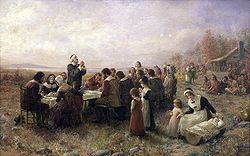
- Divali (Hinduism), celebrated in October or November
- Election Day (United States), on Tuesday closest to November 5. Presidential Election is in leap years. Mid-term elections are in even-numbered common years, such as 2010. Gubernatorial Elections and Senate and House of Representatives Elections are also held.
- First Tuesday - Melbourne Cup horse race in Australia
- International Blobfish Day - Celebrated the 1st Sunday after the 2nd Thursday every November. This celebration was first posted on social media (facebook) by its creator Eric S. Wilson on November 15, 2015
- Movember - Month-long observance highlighting men's health issues.
- Volkstrauertag (Germany), on Sunday closest to November 16.
- The United States celebrates Thanksgiving holiday on the fourth Thursday of November.
+{{{1}}}−{{{2}}}
Selection of Historical Events
- November 1, 1512 – The ceiling of the Sistine Chapel, painted by Michelangelo, goes on display.
- November 1, 1755 – An earthquake and tsunamis kills thousands of people in Lisbon, and affect other parts of Europe and North Africa.
- November 1, 1922 – Mehmed VI, the last Sultan of the Ottoman Empire, leaves the throne.
- November 1, 1981 – Antigua and Barbuda become independent from the United Kingdom.
- November 1, 1993 – The European Union is officially created.
- November 2, 1889 – North and South Dakota become the 39th and 40th States of the US.
- November 2, 1963 – South Vietnamese leader Ngo Dinh Diem is executed.
- November 3, 1903 – Panama becomes independent, separating from Colombia.
- November 3, 1957 – The Soviet Union sends the dog Laika into space. She does not survive.
- November 3, 1978 – Dominica becomes independent from the United Kingdom.
- November 3, 1986 – The Federated States of Micronesia become independent from the United States.
- November 4, 1922 – Howard Carter discovers the entrance to Tutankhamun's tomb.
- November 4, 1956 – The Hungarian Revolution is crushed by the Soviet Union.
- November 4, 1995 – Prime Minister of Israel Yitzhak Rabin is shot dead by Yigal Amir.
- November 4, 2008 – Barack Obama is elected the 44th, and first African American, President of the United States.
- November 5, 1605 – The Gunpowder Plot to blow up the Parliament in London fails, and Guy Fawkes and fellow conspirators are arrested.
- November 6, 1834 – The first Constitution of the Dominican Republic is adopted.
- November 6, 1860 – Abraham Lincoln is elected President of the United States.
- November 7, 1917 – In Russia, the October Revolution begins.
- November 7, 2000 – The US Presidential election between Al Gore and George W. Bush ends in dispute. Bush is declared the winner over a month later.
- November 8, 1923 – The Munich Beer Hall Putsch occurs, in Adolf Hitler's first attempt at power.
- November 8, 1960 – John F. Kennedy is elected President of the United States.
- November 9, 1953 – Cambodia becomes independent.
- November 9 – Significant Events in German history, including:
- 1918 – The Weimar Republic is declared.
- 1923 – The Munich Beer Hall Putsch is ended.
- 1938 – Holocaust: Kristallnacht, during which Jewish synagogues and businesses were destroyed.
- 1989 – The Berlin Wall falls, in a significant event towards the end of the Cold War.
- November 10, 1989 – Todor Zhivkov is brought from power in Bulgaria.
- November 11, 1918 – World War I comes to an end.
- November 11, 1975 – Angola becomes independent from Portugal.
- November 12, 1918 – Austria becomes a Republic.
- November 13, 1970 – A cyclone in present-day Bangladesh kills around 500,000 people.
- November 13, 1985 – The Nevado del Ruiz volcano erupts in Colombia, burying several towns under mudslides.
- November 13, 2010 – Burmese pro-Democracy leader Aung San Suu Kyi is released from house arrest.
- November 14, 1963 – The island of Surtsey is formed by a volcanic eruption to the south of Iceland.
- November 15, 1889 – Emperor Pedro II of Brazil is overthrown and Deodoro da Fonseca declares Brazil a Republic.
- November 16, 1945 – UNESCO is founded.
- November 17, 1869 – The Suez Canal, connecting the Mediterranean Sea and the Red Sea, is inaugurated.
- November 18, 1918 – Latvia declares independence from Russia
- November 19, 1969 – Brazilian footballer Pele scores the 1,000th goal of his career.
- November 20, 1945 – The Nuremberg Trials of leading Nazi war criminals begin.
- November 20, 1975 – Francisco Franco dies in Spain.
- November 22, 1943 – Lebanon becomes independent from France.
- November 22, 1963 – US President John F. Kennedy is shot dead in Dallas, Texas. Lyndon B. Johnson succeeds him.
- November 22, 2005 – Angela Merkel becomes the first female Chancellor of Germany.
- November 23, 1963 – British television programme Dr. Who is shown for the first time.
- November 24, 1859 – Charles Darwin's The Origin of the Species is published for the first time.
- November 24, 1963 – Lee Harvey Oswald is shot dead by Jack Ruby.
- November 24, 1991 – Freddie Mercury dies, one day after announcing that he had AIDS.
- November 25, 1975 – Suriname becomes independent from the Netherlands.
- November 26, 1922 – The tomb of Tutankhamun is entered.
- November 26, 2008 – The 26 November 2008 Mumbai attacks begin, as terrorists strike several locations in Mumbai, India, lasting until November 29.
- November 28, 1520 – The first navigation of the Magellan Strait, to the south of mainland South America, is completed by Ferdinand Magellan and his crew.
- November 28, 1821 – Panama unites with Greater Colombia.
- November 28, 1912 – Albania declares independence from the Ottoman Empire.
- November 28, 1960 – Mauritania becomes independent from France.
- November 30, 1872 – The first international football match is held between Scotland and England at Hamilton Crescent in Glasgow, ending 0-0.
- November 30, 1966 – Barbados becomes independent from the United Kingdom.
Trivia
- November's flower is the Chrysanthemum. Its birthstone is the topaz.
- The astrological signs for November are Scorpio (October 22 to November 21) and Sagittarius (November 22 to December 21): In the English language, November is the only month of the year whose two astrological signs begin with the same letter (they both start with an "S").
- November 1 is the only day in November during a common year to start within the fifth sixth of the calendar year.
- This month is tied with October as the months with the most births of US Presidents as of January 20, 2021: with six - James Knox Polk, Warren G. Harding (both on November 2), James Garfield (November 19), Joe Biden (November 20), Franklin Pierce (November 23) and Zachary Taylor (November 24).
- November is also the only month of the year to be one of 26 letters in the NATO alphabet.
November Media
Citrine gemstone
A Vegan activist gives out baked goods for World Vegan Day
Guy Fawkes Night fireworks. Guy Fawkes Night is celebrated on November 5th in the United Kingdom.
| Months of the Year |
|---|
|
January | February | March | April | May | June | July | August | September | October | November | December |



